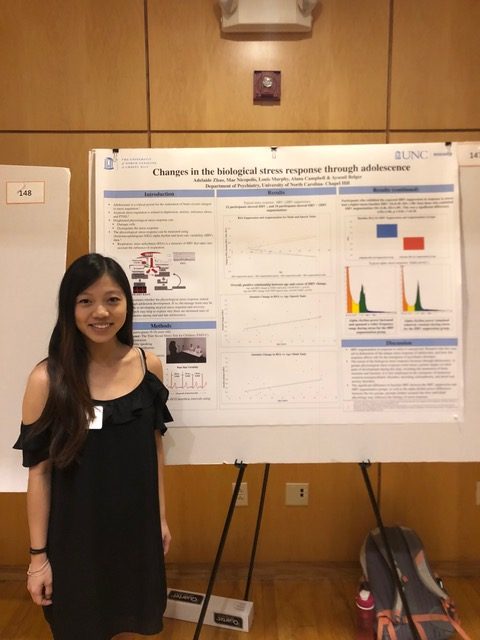
Adelaide Zhao presented a NIRL/CogNiT research poster titled “Changes in the Biological Stress Response Through Adolescence” at the 2018 UNC Celebration of Undergraduate Research.
Abstract: A heightened physiological stress response can cause cell damage and an aberrant alteration of the neural circuits involved. These effects are partly caused by overexposure to cortisol, a hormone released during stress. If the biological stress response indeed increases as a child ages into adolescence, the teenage brain may be more vulnerable to developing atypical stress regulation, which is related to depression, anxiety, and PTSD. This research may help explain why there are increased rates of psychiatric disorders during mid to late adolescence. The extent of the body’s stress response can be measured using heart rate variability (HRV), which is the variation of time intervals between heartbeats. The Trier Social Stress Test for Children (TSST), which reliably induces a stress response, was used in this study with 23 participants (ages 9-16). TSST requires participants to perform a public speaking task to a panel and then complete mental arithmetic under time pressure. Continuous electrocardiogram (ECG) data was acquired for participants before, during, and after the TSST. HRV data was extracted from ECGs using our CardioEdit software and pipeline. The Pearson correlations indicate a moderate positive relationship found between age and extent of HRV change. As age increases, the extent of HRV change in response to stress increases as well. A greater physiological stress response could mean a greater impact on the maturation of brain structure and function during this time.
